If you ask other RVers which national park is their favorite, someone is bound to mention Joshua Tree National Park in Southern California. It’s a camper’s paradise with wide open space and panoramic views.
Most evenings, the landscape glows at golden hour, and the sky turns from red hot at sunset to dark blue and star-filled at night. You can enjoy the remoteness of the park but also its proximity to Palm Springs and the Coachella Valley.
Take the time during your visit to enjoy the endless roads of the desert landscape, play on the rock formations, and, of course, marvel at the Joshua Trees.
Why Visit Joshua Tree National Park?
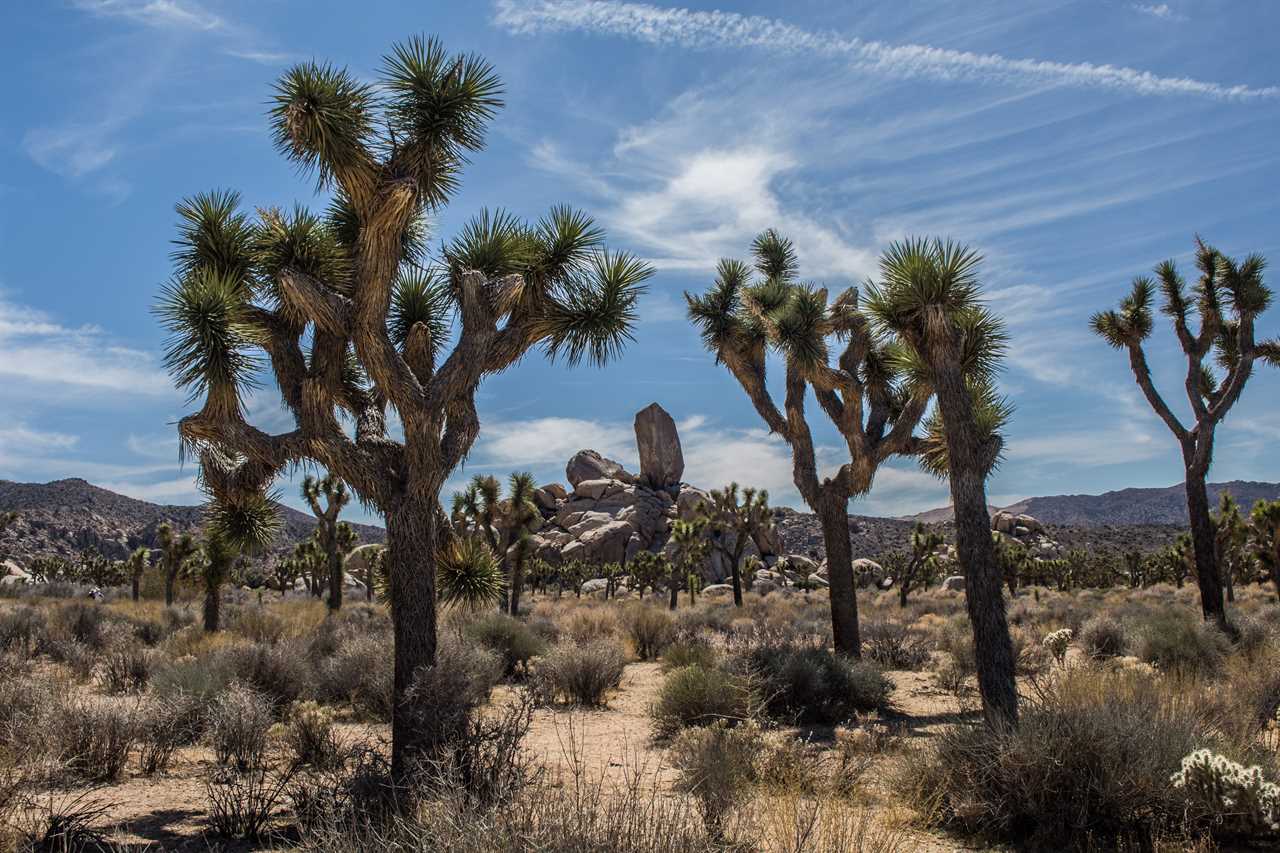
The first reason to visit Joshua Tree National Park is to see its famous and fascinating Joshua Trees. Since the Mojave desert is the only place in the world where they grow naturally, Joshua Tree National Park is the best place to see them.
These trees range between 15-40 feet tall and can live an impressive 150 years. They’re members of the Yucca family and appear as though they’re from a different planet, with limbs unpredictably jetting out like they have their own minds.
Another great reason to visit Joshua Tree National Park is the warm weather and abundance of sunshine. It’s no secret that RVers love to snowbird and the Californian desert is a wonderful place to be during the spring and fall months. You’ll enjoy sunny days and clear nights, perfect for dry camping with solar panels.
When to Visit Joshua Tree National Park
Joshua Tree National Park is open year-round, but the best times to visit are during the spring and fall months. Park elevations range from 536 feet to 5,814 feet above sea level, so expect conditions to vary depending on where you go in the park.
Joshua Tree National Park in the Spring
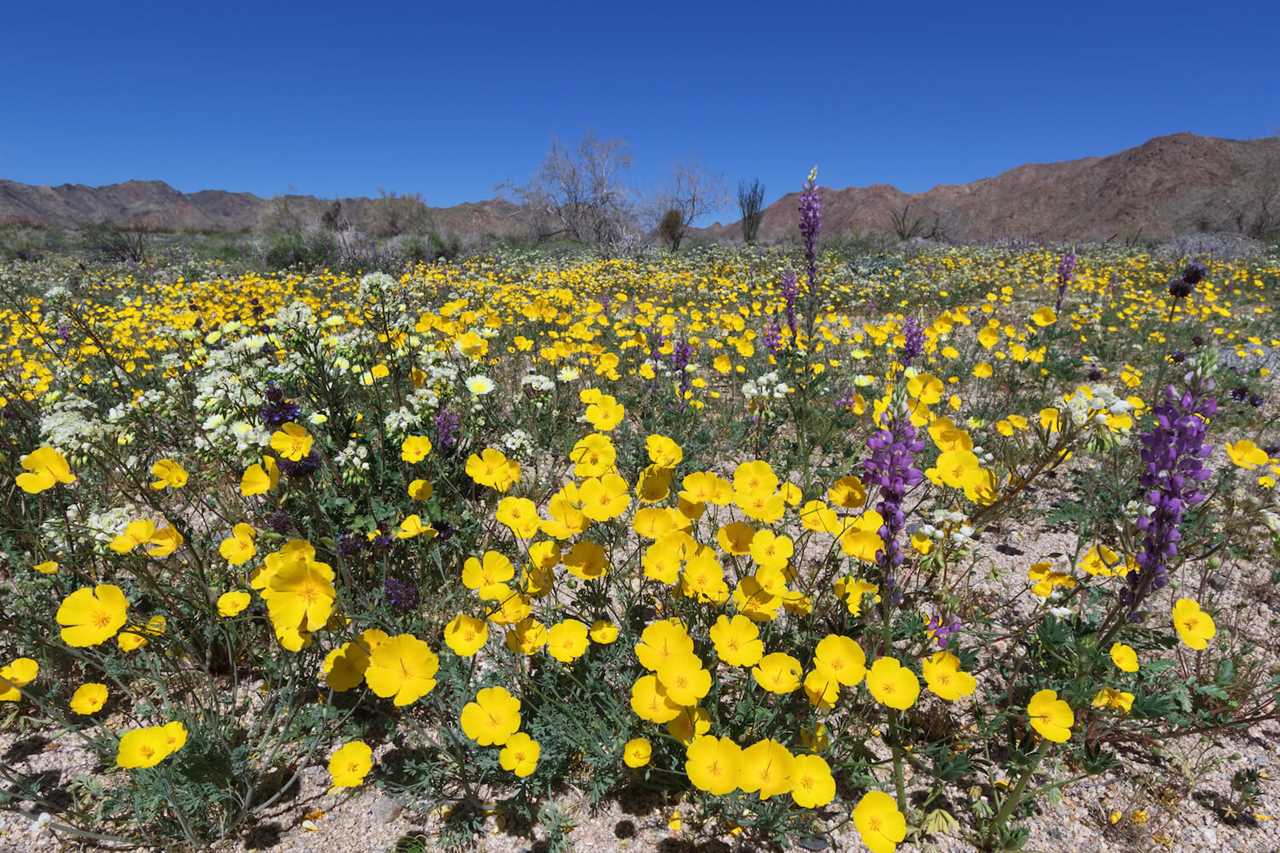
Photo by sumikophoto via Shutterstock
Spring is a very popular time in the park because the temperatures range from the mid-60s in February to the mid-70s in April. Depending on the year, wildflower blooms can be seen in the latter part of spring at the lower elevations within the Pinto Basin.
Joshua Tree National Park in the Summer
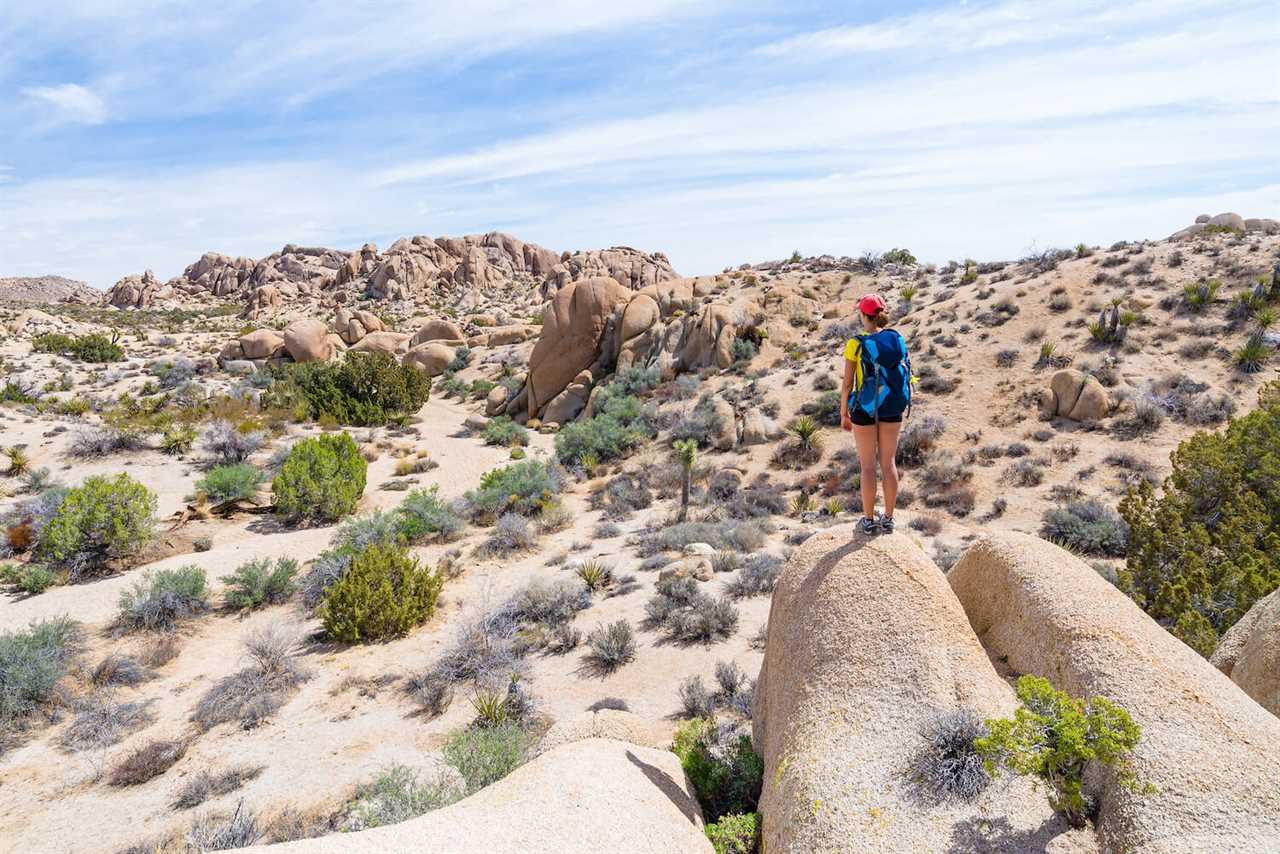
Photo by blazg via Shutterstock
Due to extreme desert heat (+100℉ days are the norm), the park is pretty quiet during the summer months. Late in the summer, monsoon season hits Joshua Tree, which cools down the daytime temperatures but can also lead to flash flooding in valleys and ravines.
Joshua Tree National Park in the Fall
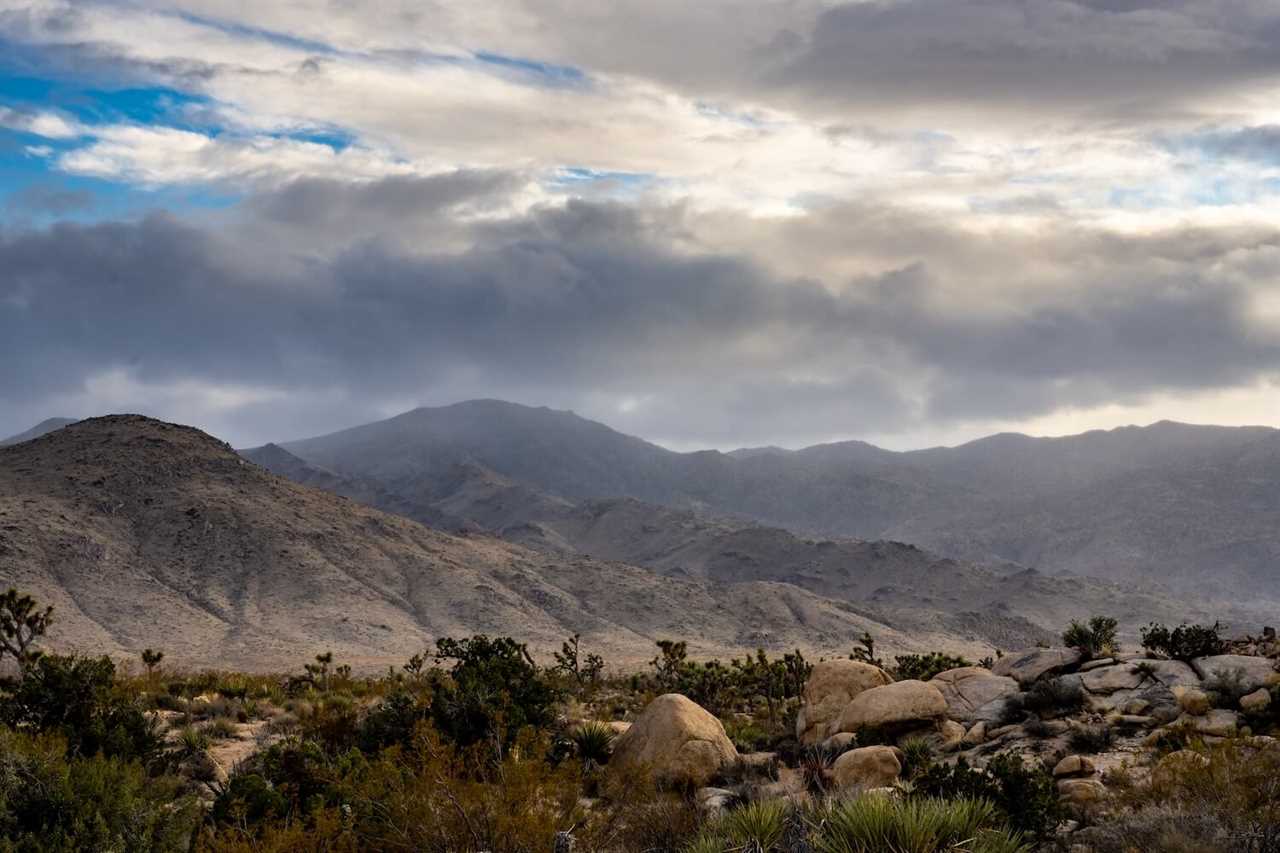
Photo by Kelly vanDellen via Shutterstock
Monsoon season continues into the fall, but it soon gives way to one of the best times to visit. Temperatures from August into October fall from the upper 90s into the low 80s, and evening temperatures range from the low 70s to the low 50s, on average.
Joshua Tree National Park in the Winter
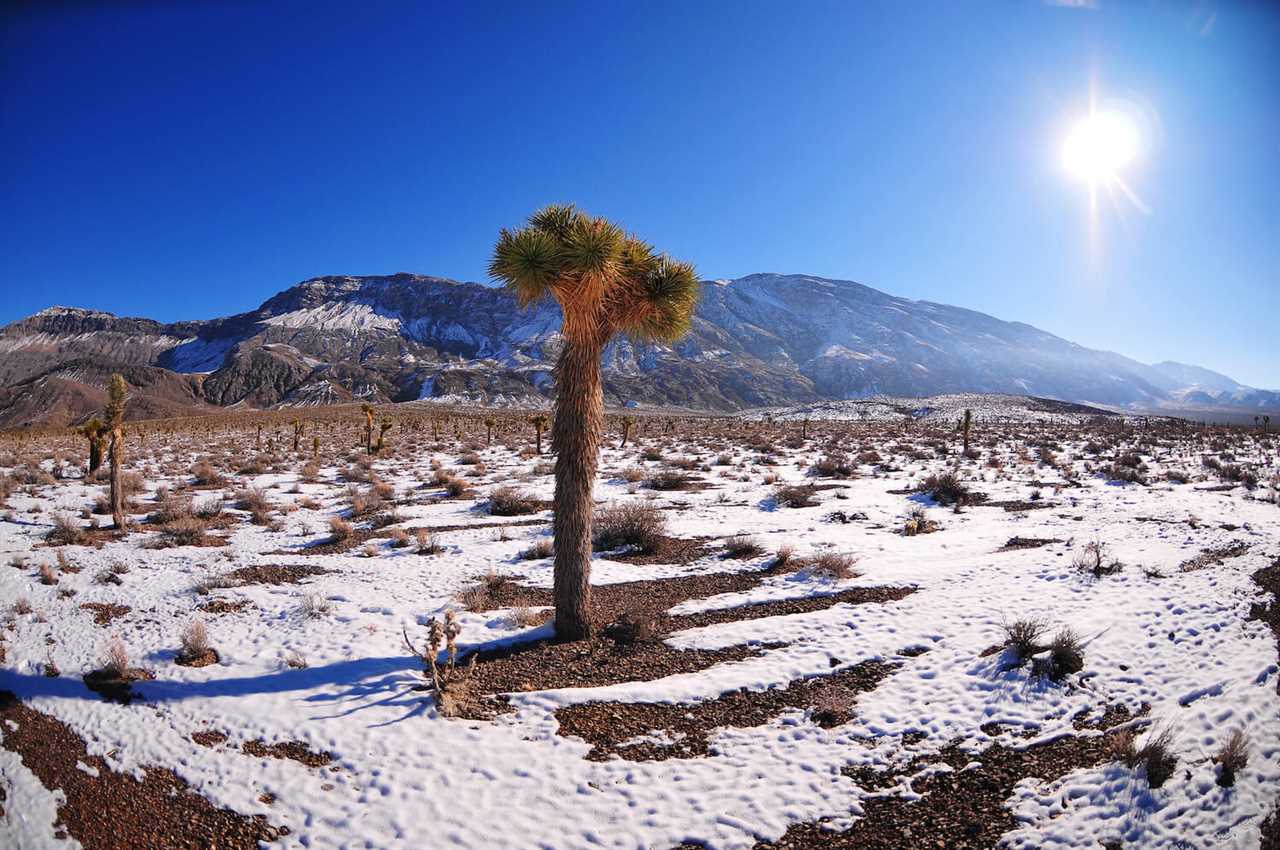
Photo by warnsweet via Shutterstock
In the heart of winter, the park’s average daily temperature is 60 degrees Fahrenheit, which is perfectly comfortable, but the nights get cold and often drop to freezing. Overnight temperatures in December and January average in the mid-30s.
Check the park’s website for the latest weather alerts and condition updates.
Where to Stay Joshua Tree National Park
Joshua Tree National Park is pretty remote and expansive. You’ll want to stay a few days. Unlike other national parks, there are no lodges or resorts for overnight accommodations. There are eight developed campgrounds, however, and camping out under the stars at Joshua Tree is an unforgettable experience.
Here are a few important things to be aware of ahead of time if you plan to camp in Joshua Tree.
Reservation versus First-Come, First-Served

Cottonwood Campground Photo NPS
Four of the developed campsites require reservations. They’re larger than the first-come, first-served campgrounds, and some offer water and flush toilets. These campgrounds fill up very quickly. We recommend planning well in advance.
Reservation Required Campgrounds
- Black Rock Campground
- Cottonwood Campground
- Indian Cove Campground
- Jumbo Rocks Campground
- Ryan Campground
Black Rock and Cottonwood are the most developed campgrounds (water, toilets, sanitation dump stations, etc.) and the best options for larger RVs. Both accommodate RVs and travel trailers up to 35 feet in length.
Indian Cove, Jumbo Rocks, and Ryan can all accommodate RVs up to 35 feet in total length, but Jumbo Rocks only accepts trailers up to 20 feet long.
First-come, First-served Campgrounds
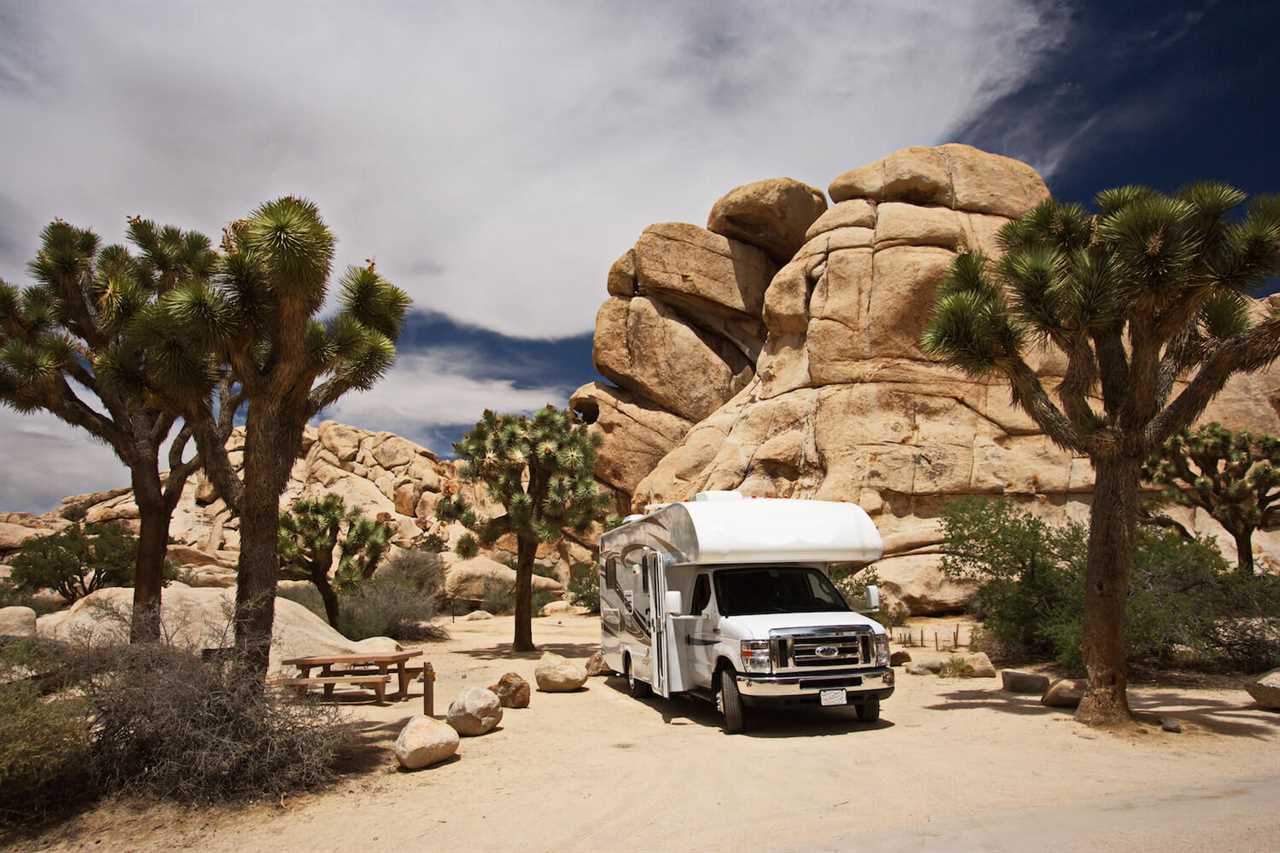
Hidden Valley Campground Photo by Karel Stipek via Shutterstock
These campgrounds are great options if you have a smaller rig and the good fortune of securing a site. During the popular season, these campgrounds fill every weekend and often during the week, as well.
- Belle Campground
- Hidden Valley Campground
- White Tank Campground
These are primitive campgrounds, so you will need to bring (and carry out) everything you’ll need during your stay.
Staying Outside the Park
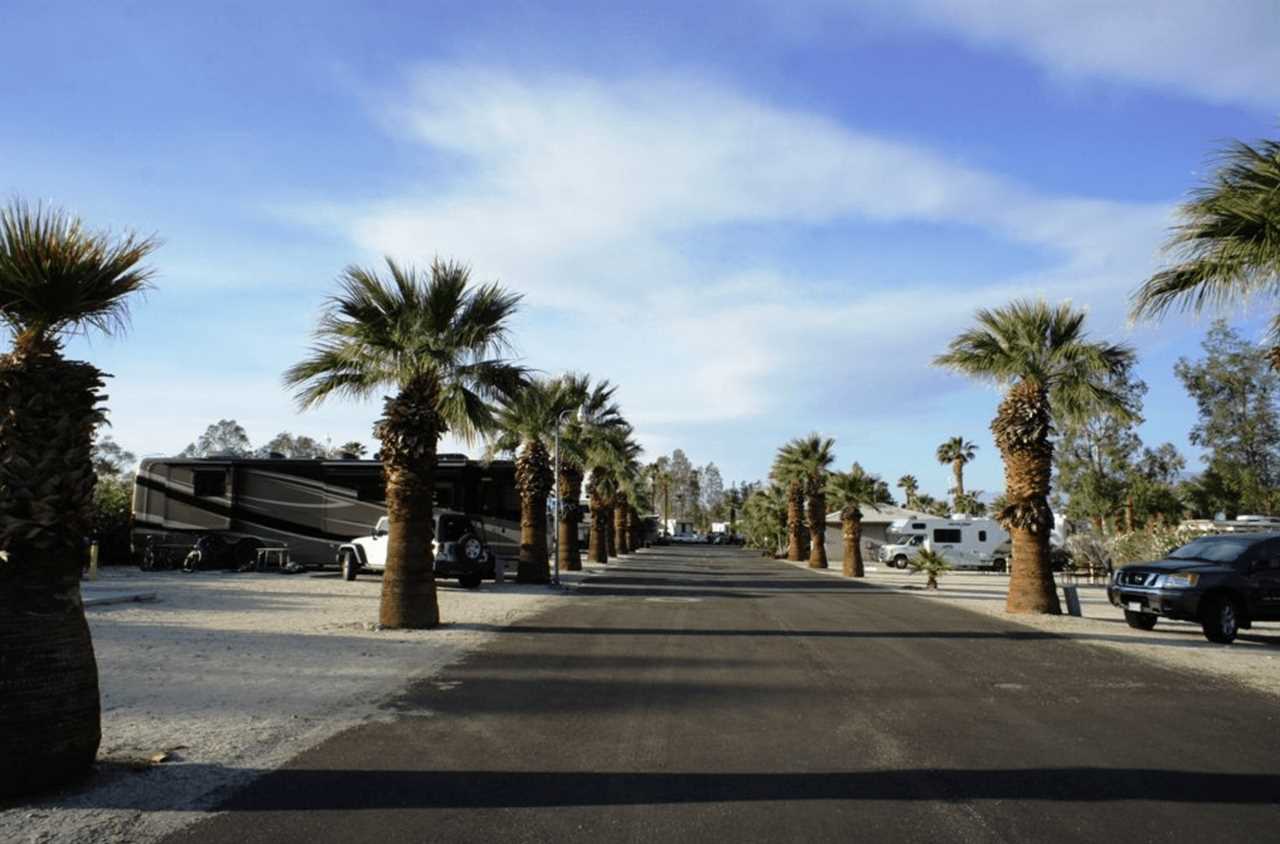
Photo by Sam’s Family Spa and RV Resort
If you’re unable to find a site in the park or you’re looking for a campground with more amenities, here are a few nearby campgrounds:
- TwentyNine Palms RV Resort and Cottages: About 10 minutes from the north entrance.
- Sam’s Family Spa and Resort: About 45 minutes from the main visitor center.
- Catalina Spa and RV Resort: About 50 minutes from the main visitor center.
- Palm Springs Oasis RV Resort: About 45 minutes from the south entrance.
- Indian Waters RV Resort and Cottages: About 30 minutes from the south entrance.
Invest in a Good Sam Membership and save 10% on nightly stays at Good Sam Campgrounds.
Tips for your Camping Stay

Photo by Leigh Trail via Shutterstock
- Reservations for the reservable campgrounds can be made up to six months in advance.
- Reserve using the links below or by calling 1-877-444-6777.
- Black Rock Campground
- Cottonwood Campground
- Indian Cove Campground
- Jumbo Rocks Campground
- No campgrounds in the park offer electric RV hookups.
- All camping gear must be set up within 25 feet of the site’s picnic table.
- Generator use is restricted to 7-9 am, noon-2 pm, and 5-7 pm.
- Hammocks are not permitted in campgrounds and must be hung from rocks or climbing bolts elsewhere to protect the park’s sensitive vegetation.
- Backpacking is permitted in the park, but it requires more advanced planning and preparation.
How to Get Around Joshua Tree National Park
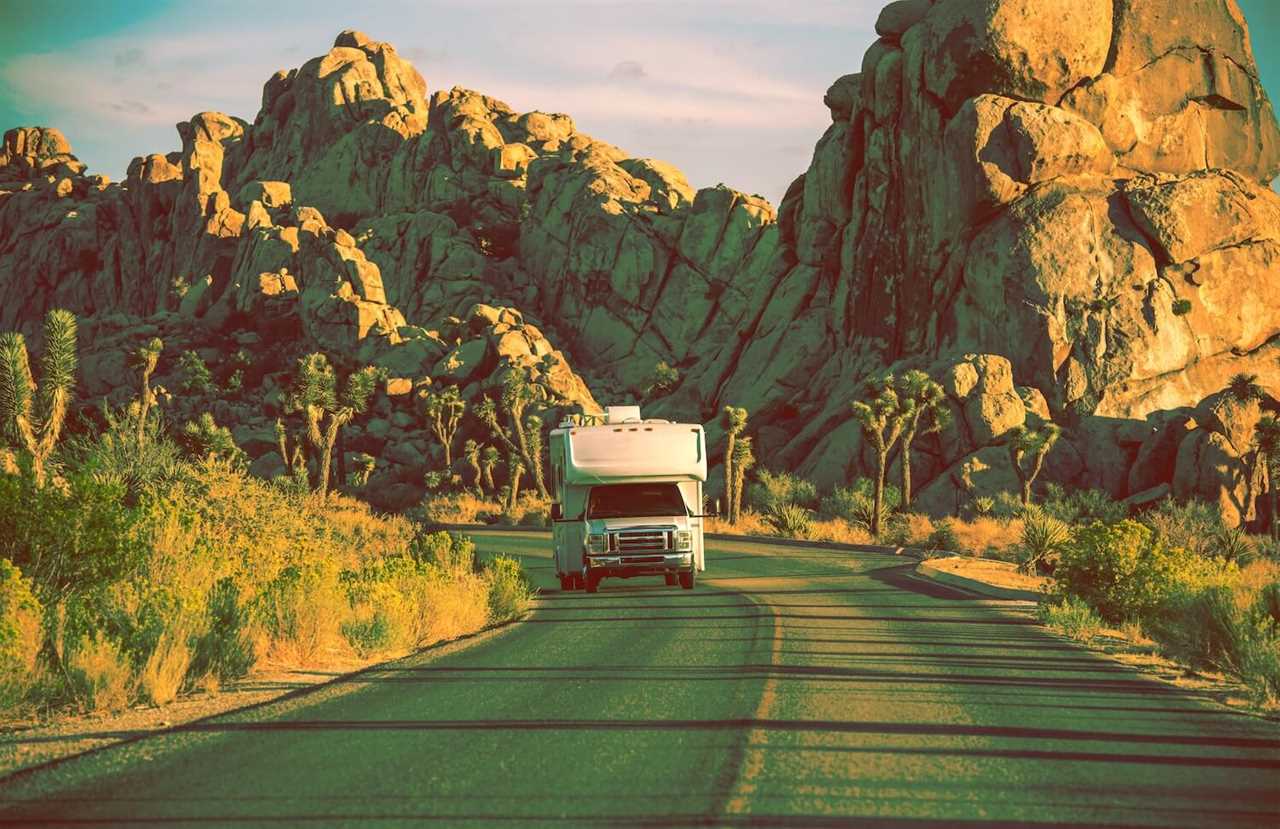
Photo by Virrage Images via Shutterstock
Nestled between I-10 and California SR 62, Joshua Tree is located in Southeastern California and is easy to access. Several towns nearby, including Palm Springs, Indio, and Twentynine Palms, make perfect supply stops before entering the park.
Indio is the last best stop on I-10 if you’re entering the park from the south. The park’s south entrance is located off Exit 168, about 30 minutes east of Indio. The park also offers a west entrance on Quail Springs Road, about 10 minutes southeast of the town of Joshua Tree. And the north entrance is just ten minutes south of Twentynine Palms on Utah Trail.
Several paved roads allow you to traverse the park, but going from site to site can require long drive times. The most frequented sites are located near the northern edge of the park, so if you’re coming from the south along I-10, you’ll be driving through the park for an hour or so before you spot your first Joshua Tree.
Places To Go
There are many places to visit in the park that offer a variety beyond the infamous trees. It’s a unique location that features the intersection of two desert ecosystems.
Cholla Cactus Garden
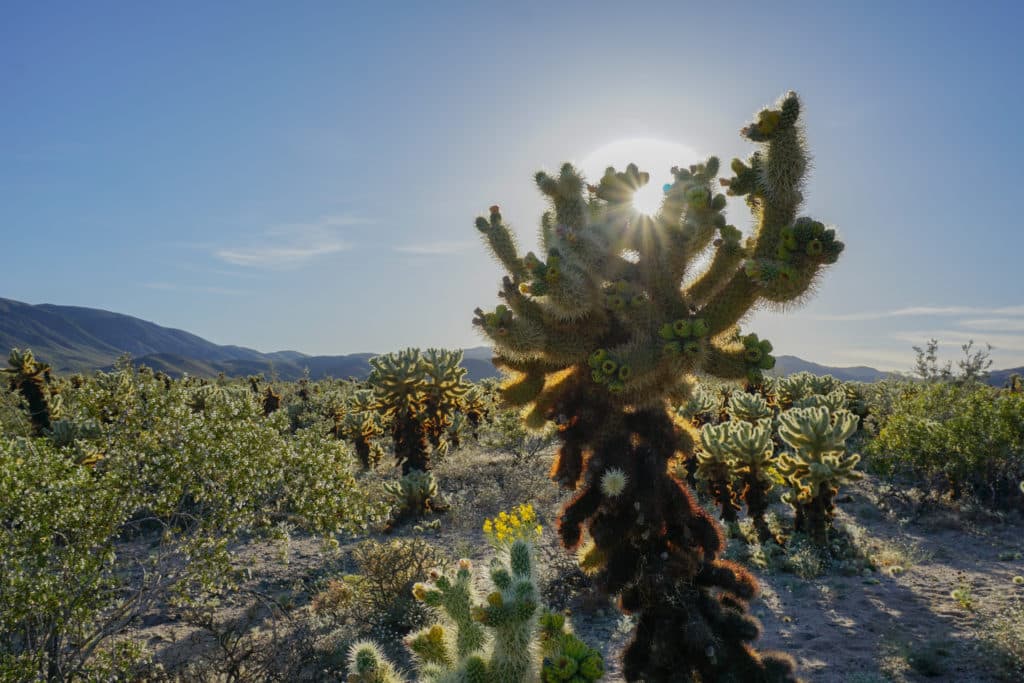
The Cholla Cactus Garden is its own special area and is unlike any other part of the park. Be sure to enjoy the flat, ¼-mile nature trail to get the best look at the cacti. This patch of cacti is incredible because it mostly consists of Teddybear Cholla, which is the star of the cactus world.
The Cholla Cactus Garden is so impressive, and you’ll love snapping photos of these majestic plants. Their beauty changes throughout the day depending on how the sunlight hits them. A small word of advice, look but don’t touch. Ouch!
Arch Rock
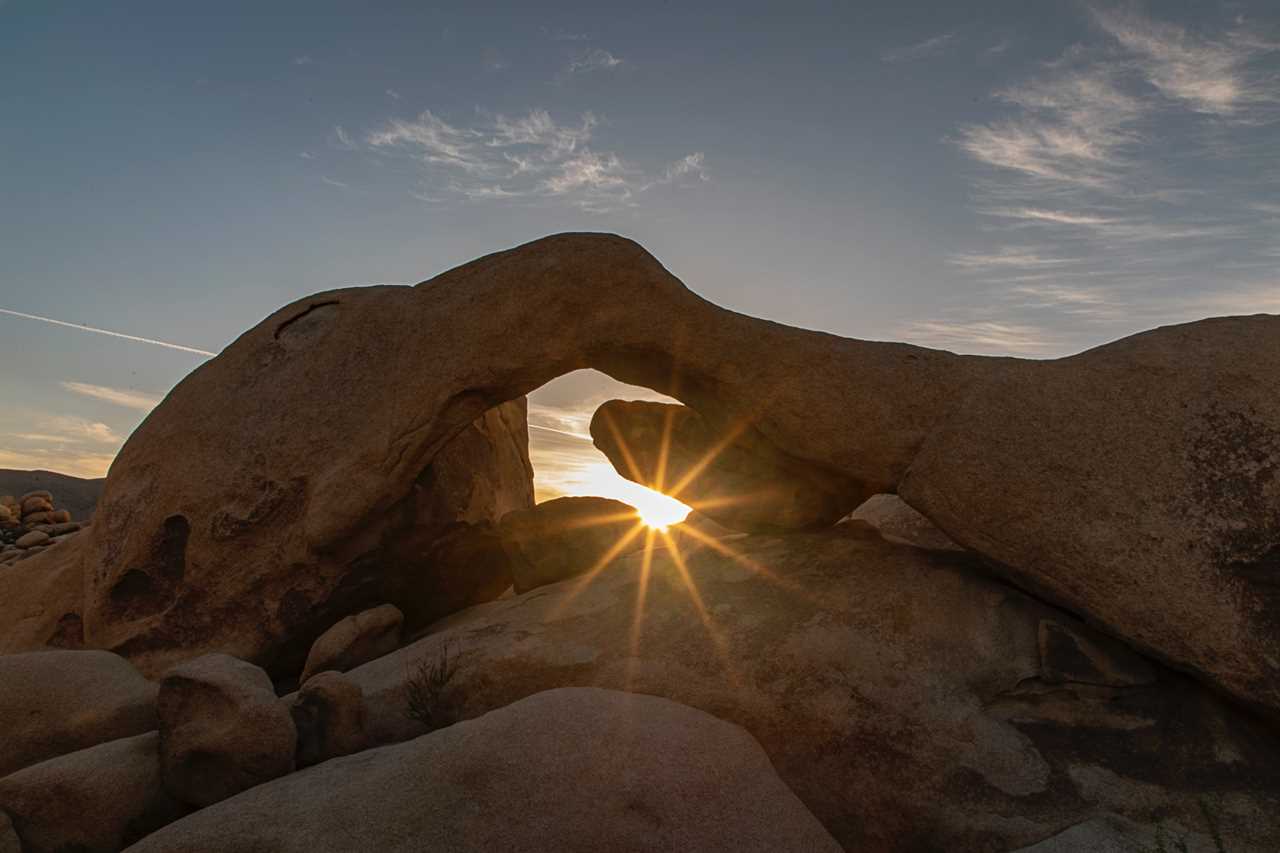
Arch Rock is a very popular rock formation located a half-mile from White Tank Campground. The loop trail is easy to follow and a perfect activity for the whole family. Of course, the Arch Rock itself is the thing people most want to see, but there’s lots of space to wander around and explore the other rock formations, too.
It’s also a very popular place for night photography and stargazing. If interested, White Tank Campground is a really convenient place to stay because of its proximity to the trailhead.
Keys View
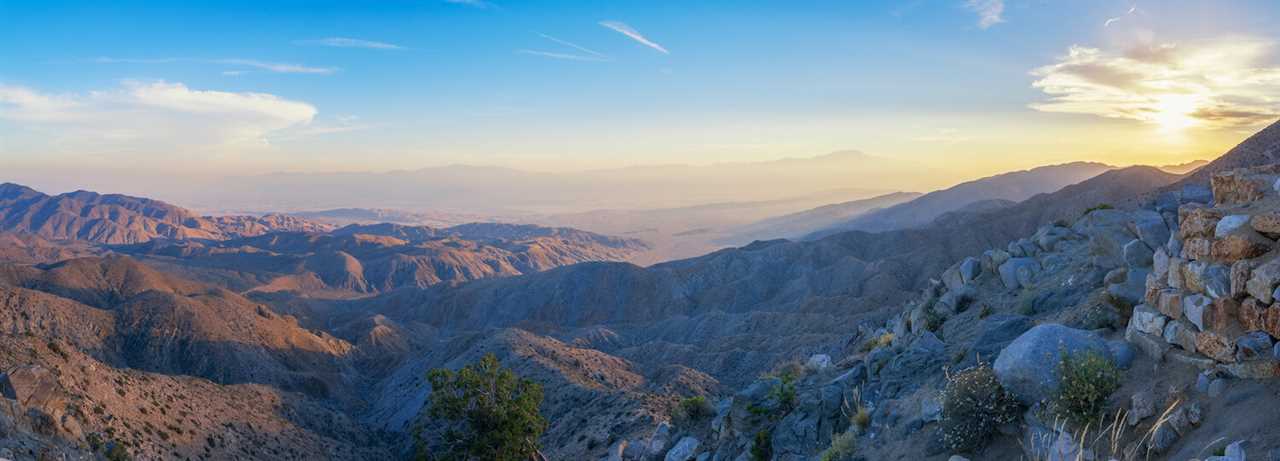
Photo by Mike Ver Sprill via Shutterstock
Keys View is a popular lookout that offers incredible panoramic views of the park and the Coachella Valley. If beautiful scenery is your thing, make sure to visit Keys View. It’s about a 20-minute drive from the main road to the lookout via Keys View Rd.
Ryan Mountain
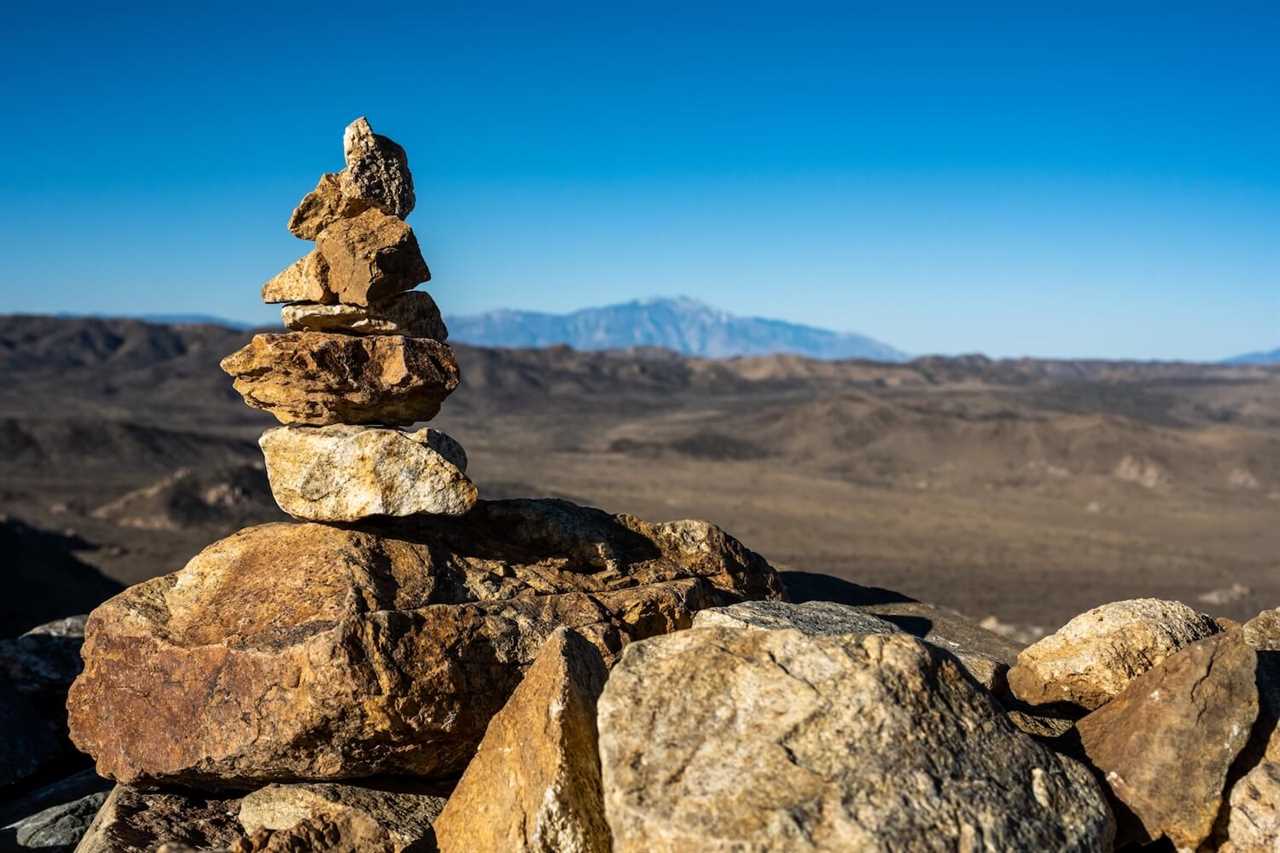
Photo by Kelly vanDellen via Shutterstock
One of the most popular activities in the park is the hike to Ryan Mountain. This 3-mile round trip trail leads to the summit, where you’ll be treated to sweeping 360-degree views. The hike is listed as challenging by the NPS, so be sure to bring plenty of water and expect changing weather conditions.
Things to Do in Joshua Tree National Park
The combination of the Mojave Desert and the Colorado Desert makes Joshua Tree a wonderful desert wilderness to explore. Here are some of the most popular activities in the park:
Hiking
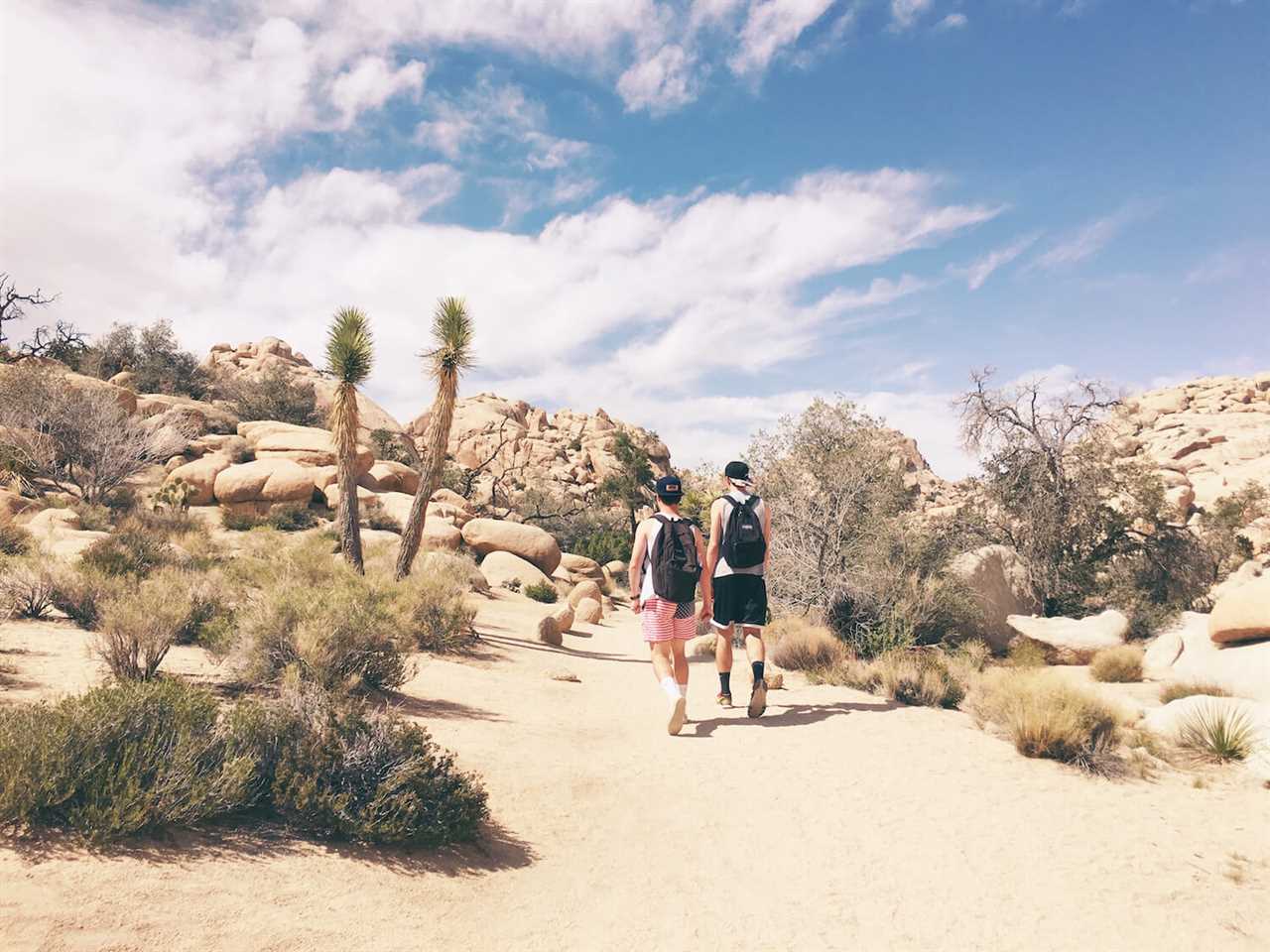
Photo by Clayton Carlson via Shutterstock
Hiking is a great way to get off the road and experience more of the desert landscape. The National Park Service offers plenty of safety tips for hiking in Joshua Tree, and here are some of the park’s most popular trails:
- Barker Dam Trail: An easy 1.1-mile trail with interpretive exhibits containing information on park history. It’s a popular place for viewing bighorn sheep from a safe distance.
- Skull Rock Trail: A 1.7-mile trail to explore the mysterious natural formation the trail is named after.
- Lost Horse Mine Trail: A moderate 4-mile out and back trail to explore what was once the area’s most successful gold mine.
- Mastodon Peak Trail: A moderate 3-mile loop trail with an optional scramble to the top of a granite peak.
- Lost Palms Oasis Trail: A challenging 7.5-mile out and back trail down a canyon to one of the park’s most remote fan palm oases.
The Park Service DOES NOT recommend attempting challenging hikes in the heat due to the elevated risk of sun exposure and dehydration.
Mountain Biking
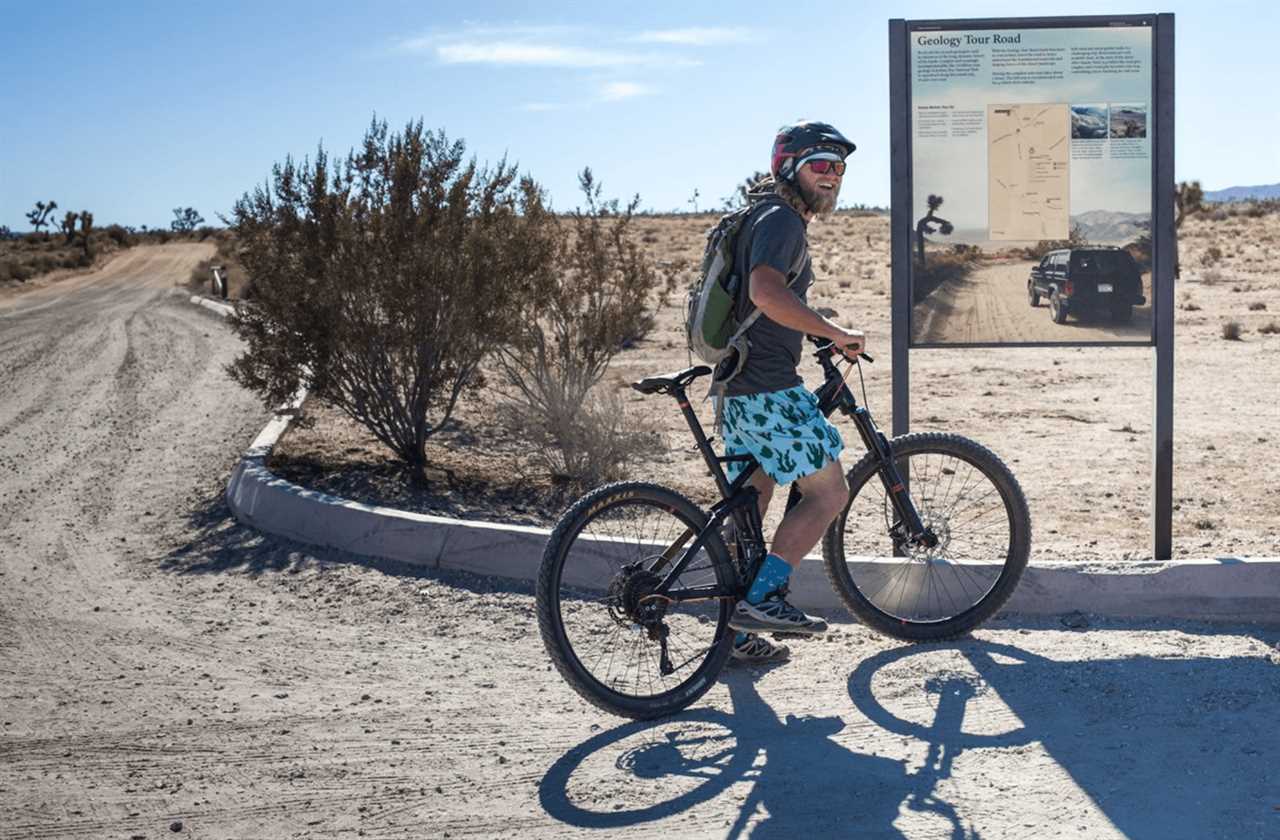
Photo by NPS
The majority of the park’s paved roads are not suitable for road cycling. However, several backcountry roads are perfect for mountain bikes. There are even three campsites within Ryan Campground dedicated to cyclists.
Be aware that bikes are only allowed on roads open to vehicle traffic but that the main park roads do not offer bike lanes or wide shoulders. Consult the park’s website for safety tips and road recommendations before biking in Joshua Tree.
Photography
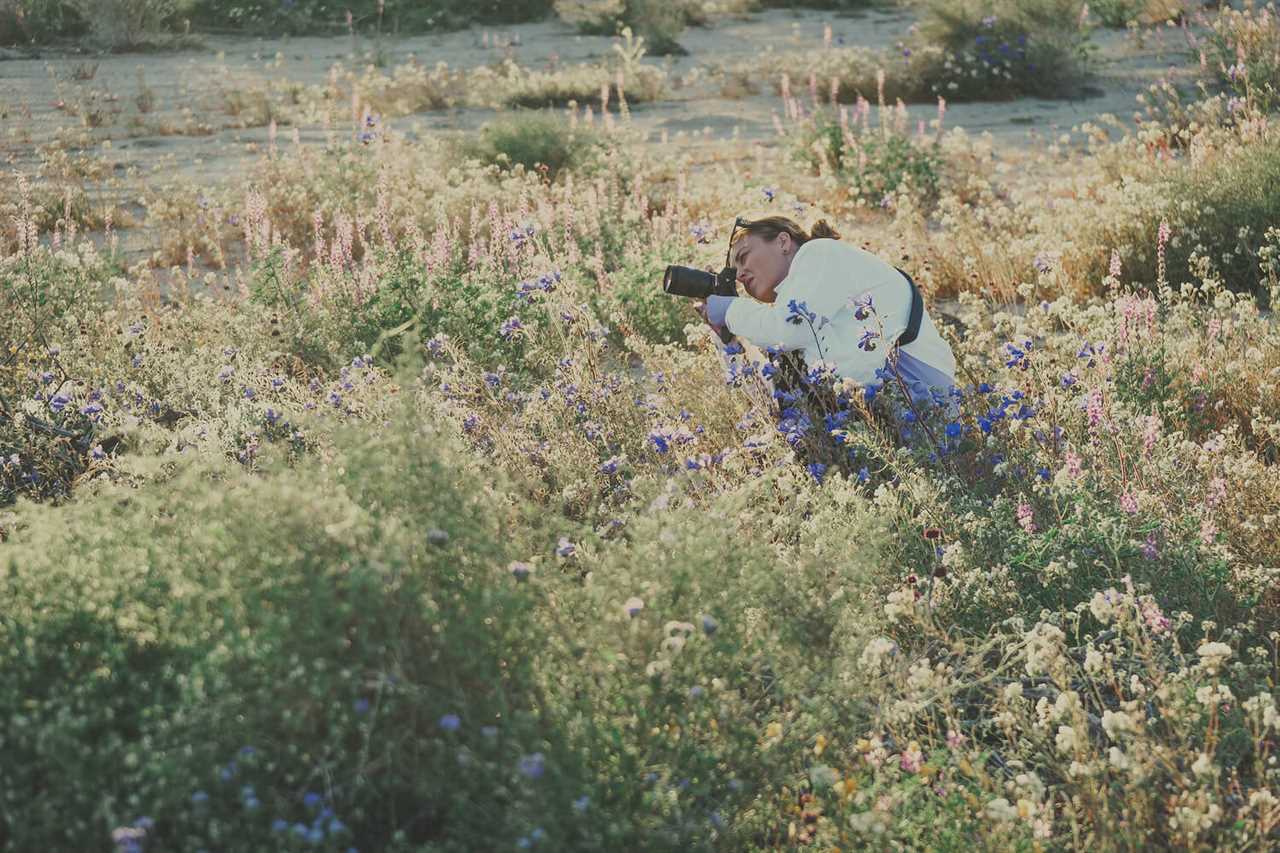
Photo by melissamn via Shutterstock
Photographers love Joshua Tree because of the variety it contains. From sunrise to sunset, photographers can find landscapes, animal inhabitants, and even human visitors to place in frame.
Commercial photography does require a permit, and if you’re interested in expanding your knowledge, the Desert Institute offers field courses in partnership with the Joshua Tree National Park Association.
Stargazing
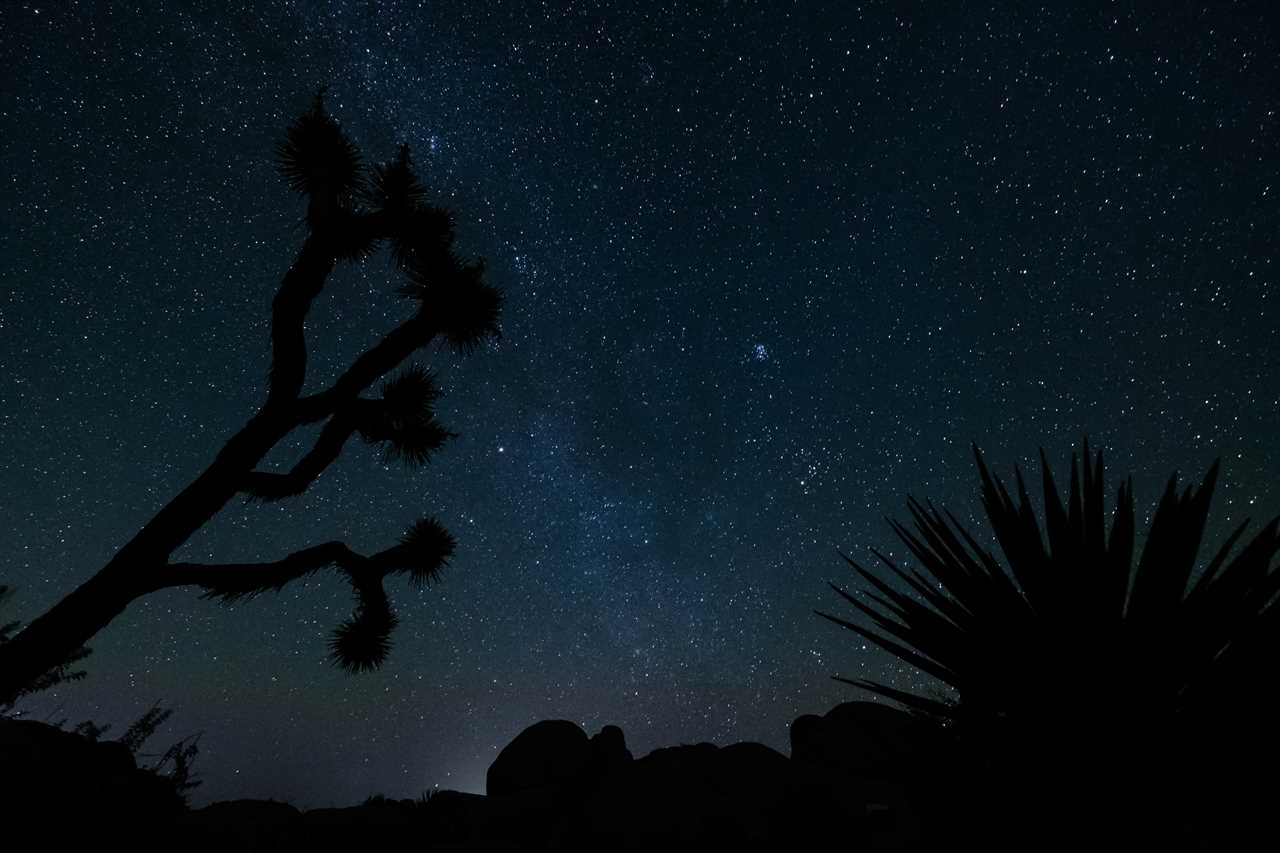
Stars can be hard to come by in urban areas like San Diego and Los Angeles, but Joshua Tree is a different story. Designated as an International Dark Sky Park, it offers some of the best night sky viewing in all of Southern California.
After the sun goes down, keep your headlamp in red light mode to preserve your night vision. Your eyes will need less time to adjust when you lie down to see how many shooting stars you can count!
Rock Climbing
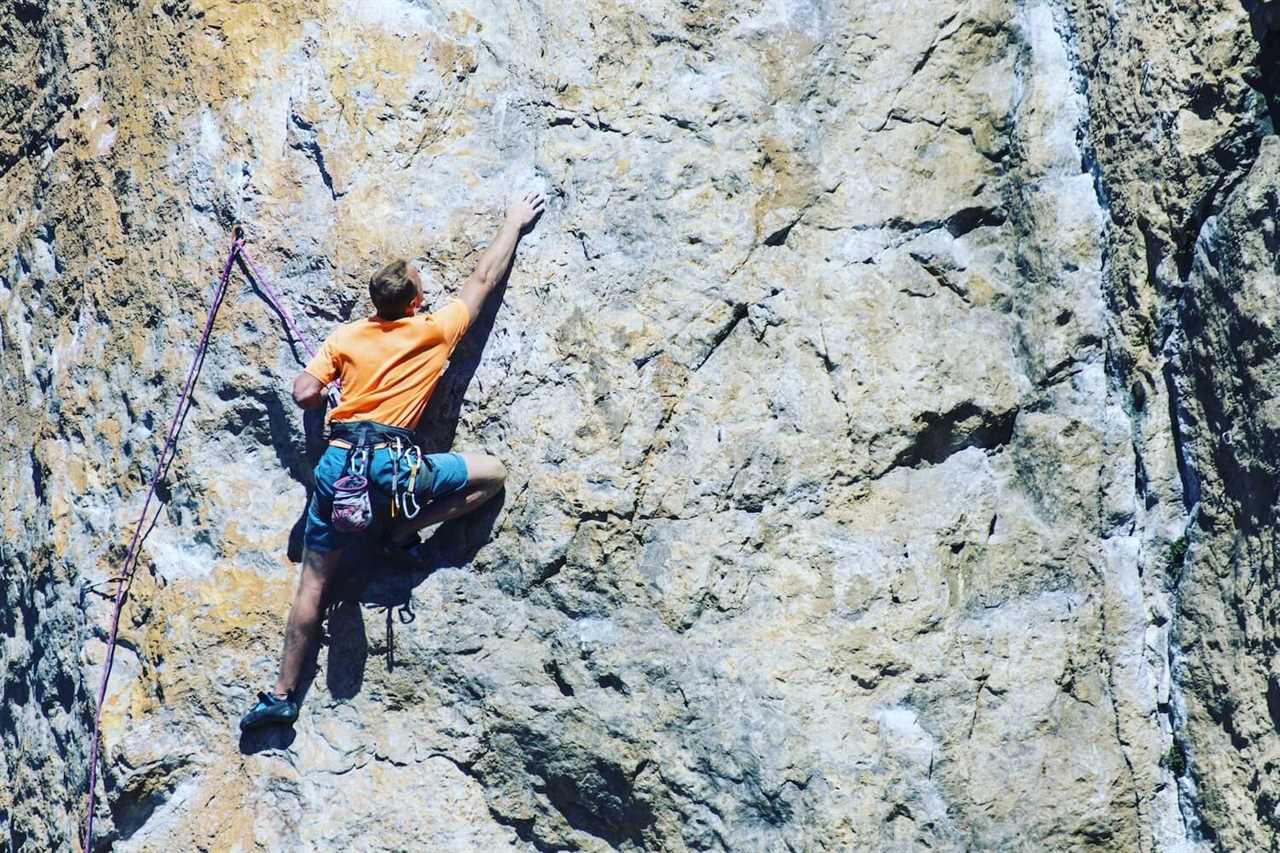
Photo by Vitalii Nesterchuk via Shutterstock
Rock climbing, in addition to bouldering and slacklining, is another great activity to enjoy in the park. To date, there are more than 8,000 known climbing routes, over 2,000 bouldering problems, and numerous natural rock gaps that make the perfect spot to set up a slackline.
On a busy weekend, the park may have hundreds of climbers enjoying their slice of this monzogranite mecca. So be sure to follow Leave No Trace Principles and familiarize yourself with the park’s climbing management plan before your visit.
What to Bring and How to Prepare
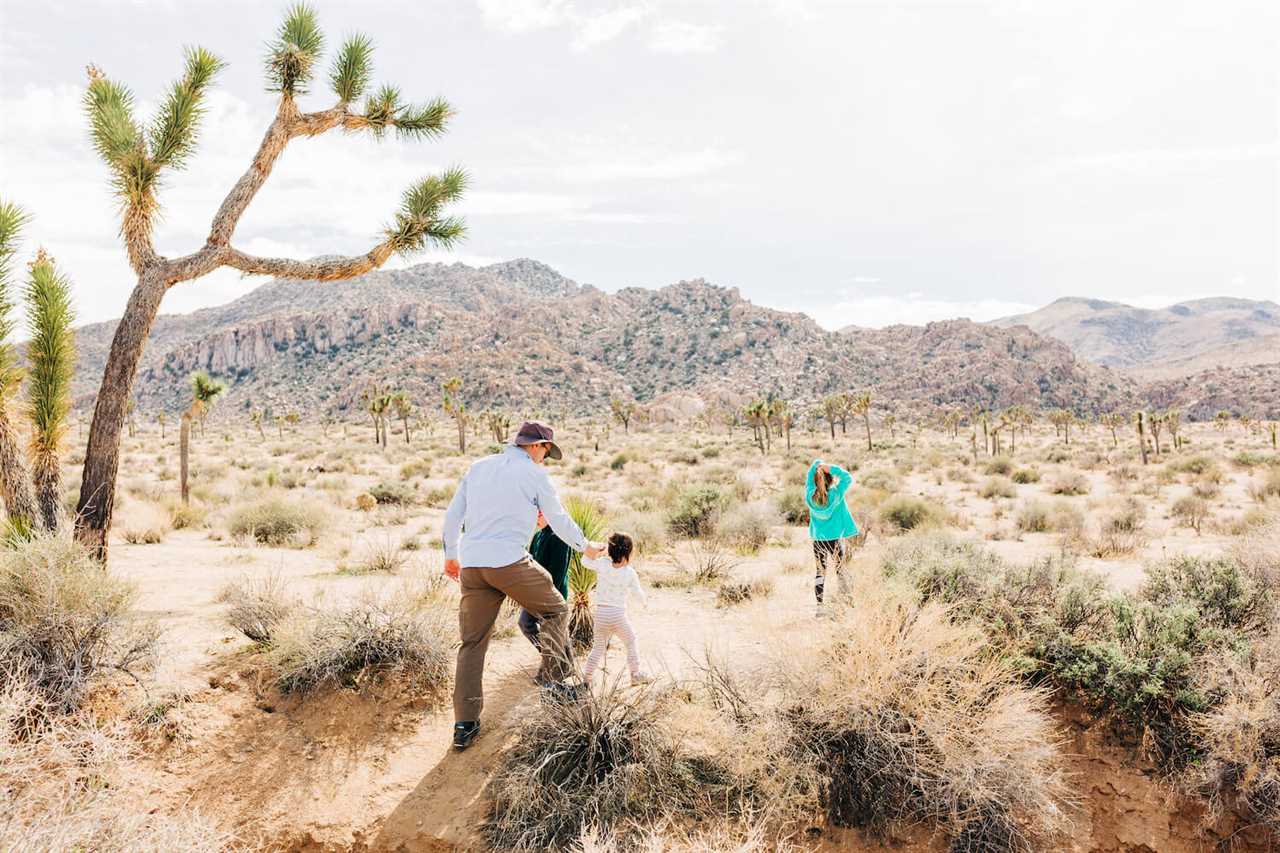
Photo by Karen Culp via Shutterstock
- The desert can be dangerous, and the weather can change quickly. Check the forecast frequently and pack layers to prepare for changing conditions.
- The remote location means there is no cell service in many parts of the park. Communicate your plans to loved ones or authorities ahead of time, especially if traveling alone.
- Investing in a cell signal booster may improve cell reception in areas with limited service.
- A quality camping cooler is a great way to keep food and beverages cold in the heat of the desert.
- Bring an extra canopy tent and ensure your awning is in good condition so you can escape direct sunlight during the heat of the day.
- Keep up with air conditioner maintenance to regulate the temperature inside your RV.
- For the latest info on visiting Joshua Tree, visit their website: Joshua Tree National Park.
Brief History of Joshua Tree National Park
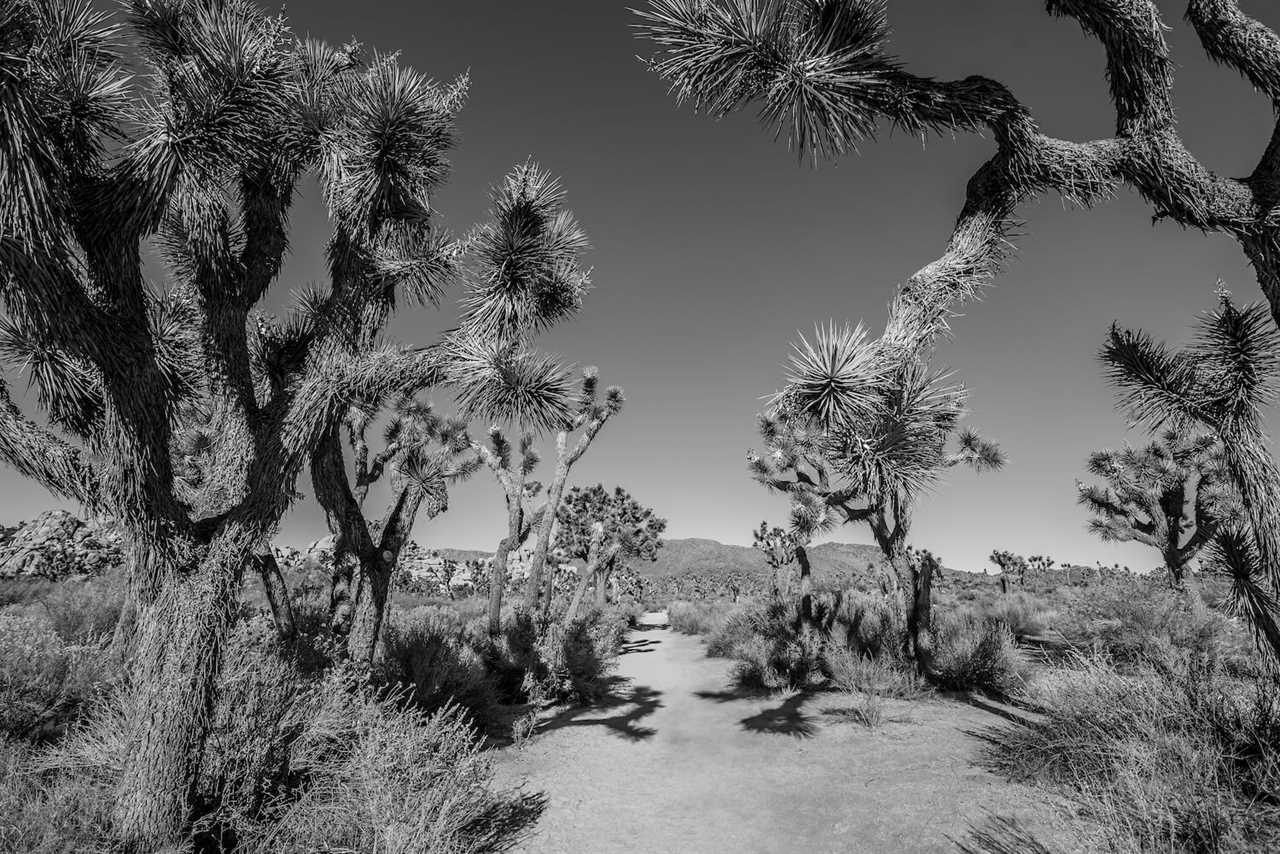
Photo by Boston Schulz via Shutterstock
Despite its harsh desert environment, humans have inhabited the area that is now Joshua Tree for more than 5,000 years. In the modern era, the biggest threats to this natural environment were land developers and cactus poachers.
In the late 1920s, a Pasadena resident named Minerva Hoyt began voicing her concerns about the unregulated removal of cacti and other desert plants to be used in home gardens throughout Los Angeles.
In a relatively short time, her conservation efforts resulted in the formation of the Joshua Tree National Monument in 1936. The original protected area encompassed roughly 825,000 acres but was reduced by about 265,000 acres in 1950 when the Park Service excluded certain mining parcels in the eastern part of the park.
On Halloween in 1994, the Desert Protection Bill passed and Joshua Tree was elevated to national park status. The bill also added back approximately 234,000 acres of what had been lost in the 50s.
Plan your next trip to the national parks in an RV. Rent an RV, trade-In your RV, or buy a new or used RV and start traveling for less than $5 a day.
Have you been to Joshua Tree National Park? Share your tips and advice in the comments below.
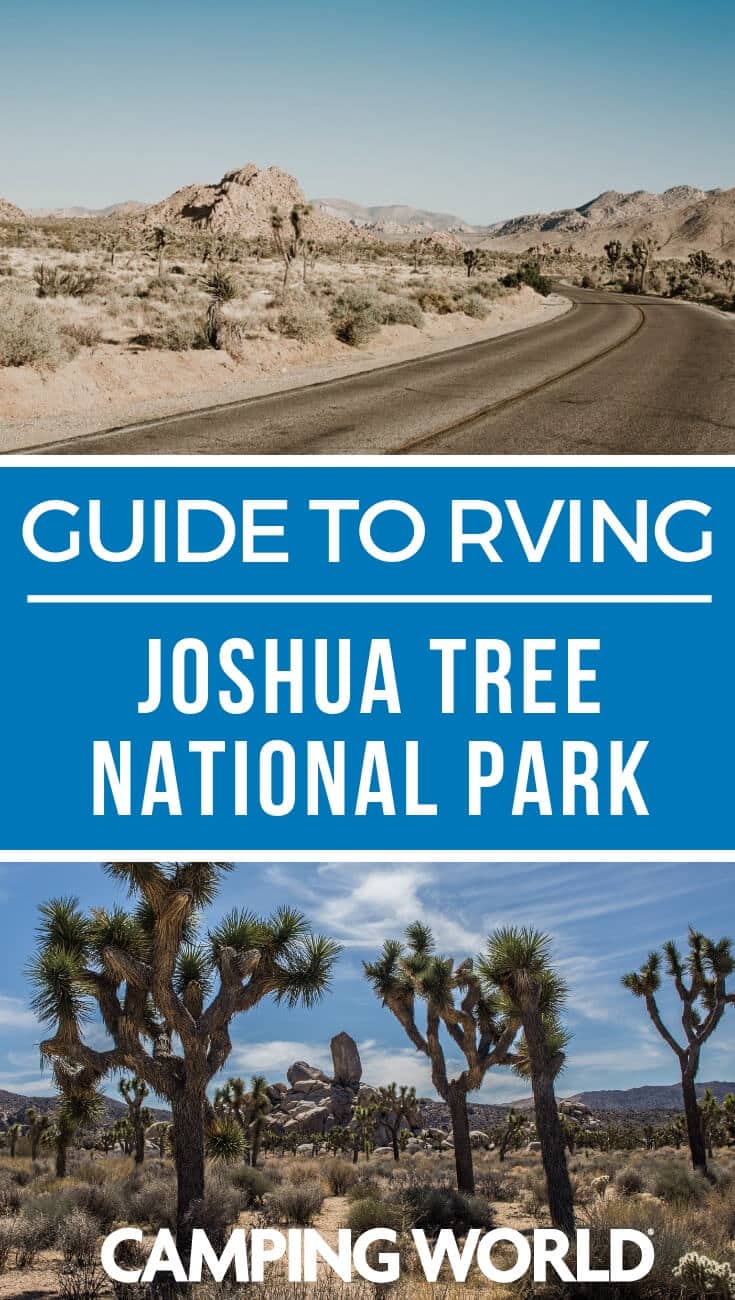
By: Lindsay McKenzie
Title: Camping World’s Guide to RVing Joshua Tree National Park
Sourced From: blog.campingworld.com/the-rv-life/where-to-go/camping-worlds-guide-to-rving-joshua-tree-national-park/
Published Date: Tue, 27 Sep 2022 22:00:44 +0000
---------------------------------------------
 CampingSurvivalistHuntingFishingExploringHikingPrivacy PolicyTerms And Conditions
CampingSurvivalistHuntingFishingExploringHikingPrivacy PolicyTerms And Conditions
